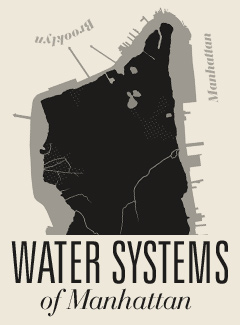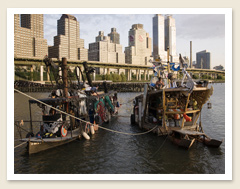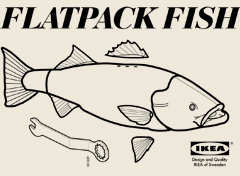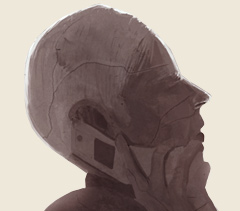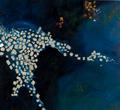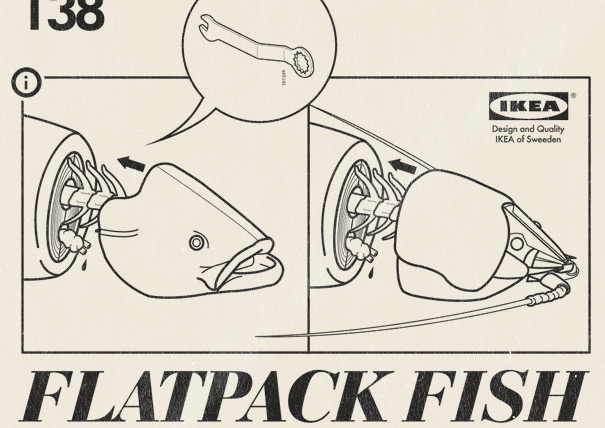
schematics by ZACK SULTAN
Last June, a provocative ad campaign announced IKEA’s debut in Red Hook, Brooklyn. Billboards depicted New York landmarks constructed entirely of “flatpack” cardboard boxes, the type the company has used for decades to transport flimsy, particleboard furniture units around the globe.
These constructions were the work of architect John Hobbs, who created, among other dioramas, a 96-foot-long replica of the Brooklyn Bridge and a view of the Red Hook skyline.
This imagery is no mere flight of fancy. It is a utopian proposal for the future of the city. The ads re-envision New York as a hyper-efficient shanty metropolis, in which principles of Scandinavian design renovate soon-to-be-crumbling civic infrastructure into a rectilinear, modular and recyclable space. Already, IKEA produces a successful line of flatpack homes. A full flatpack city could maintain the distinctive appearance of today’s New York, while adjusting cost and sustainability requirements to better face current economic realities.
But why stop there?
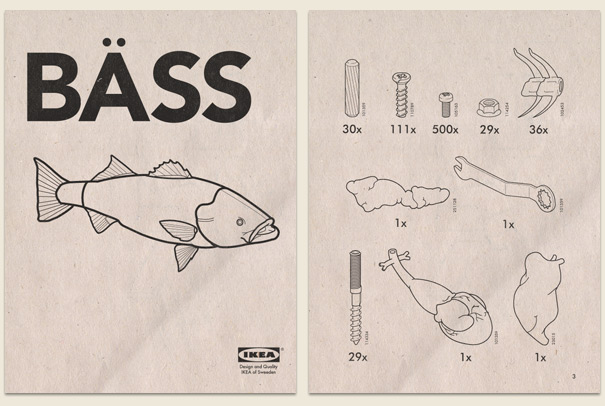
I propose that we extend this flawless logic beyond the limits of conventional architecture to the biological construction of fauna inhabiting the watery zones surrounding the city.
The BASS Flatpack Fish will introduce rational and utilitarian design into the often turbulent ecology of the East River. Crafted out of sustainably-produced organ and tissue materials, it will prove an affordable, beautiful and nutritious addition to the habitat.
Fishermen and conservationists alike will love the environmentally conscious measures taken in BASS’s design. Everything from the biodegradable cartilage screws used in construction to ultra-efficient packaging aim at reducing harmful emissions, product toxicity and freight costs. BASS are as green as they are sturdy, meeting or exceeding regulatory standards.
For Flatpack Fish, reduced environmental impact doesn’t mean reduced visual impact. Modular construction ensures that parts can be swapped interchangeably throughout the BASS line, promising previously unimaginable innovations in biodiversity: A crayfish head couples seamlessly with a bluefish pelvis. Suffice it to say, BASS’s customizability will please the sensibilities of New York’s most demanding aesthetes.
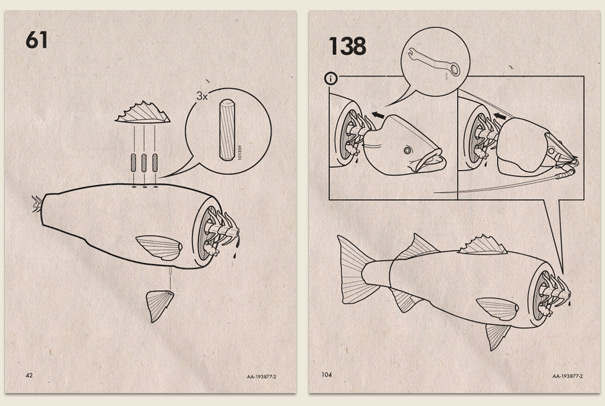
A radical and innovative foray into synthetic biology, the Flatpack Fish will improve the functionality of our local wildlife, reducing their environmental footprint while heightening their aesthetic appeal.
In my capacity as an unsolicited, unpaid, freelance consultant for IKEA Group, I have drafted a set of instructional diagrams, which I am pleased to reproduce in The New York Moon. As this is the first time they have been made available to the public, I urge civic-minded readers to download these schematics and disseminate them widely to their elected representatives.
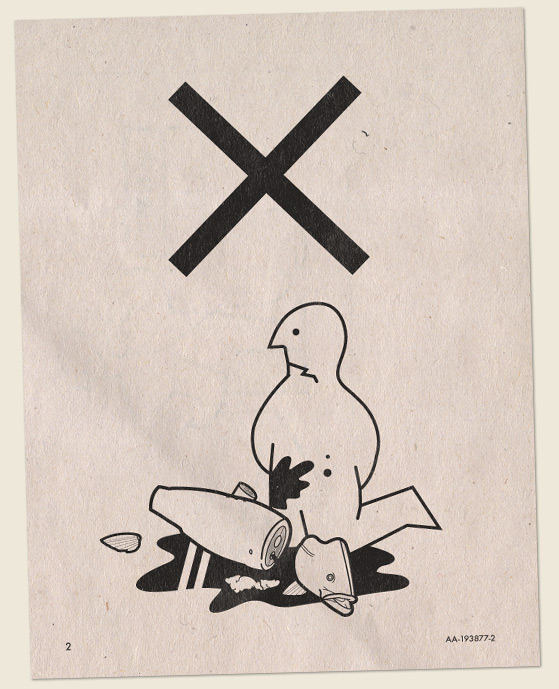
ABOUT
BLUEPRINTS
A New York Moon “Blueprint” is essentially an idea encapsulated in a short amount of words or imagery.  It is something that could occur to as you ride the subway or right before you fall asleep. The Moon is interested in publishing re-imaginings of the city or world, and proposals that are as much thought experiments as possible creations. For example, if you think the intersection outside your house could be designed better or at least in a way more accomodating to human interaction, draw it and submit it, or photoshop it. On another plane, if you, in a fit of Fourierism, have a novel idea about to organize your building’s daily routine so as to inspire creativity and love, we are all ears and eyes. It is best, perhaps, to read a few blueprints to get a better understanding of how they work.
It is something that could occur to as you ride the subway or right before you fall asleep. The Moon is interested in publishing re-imaginings of the city or world, and proposals that are as much thought experiments as possible creations. For example, if you think the intersection outside your house could be designed better or at least in a way more accomodating to human interaction, draw it and submit it, or photoshop it. On another plane, if you, in a fit of Fourierism, have a novel idea about to organize your building’s daily routine so as to inspire creativity and love, we are all ears and eyes. It is best, perhaps, to read a few blueprints to get a better understanding of how they work.
Submit Blueprints to: blueprints@nymoon.com


